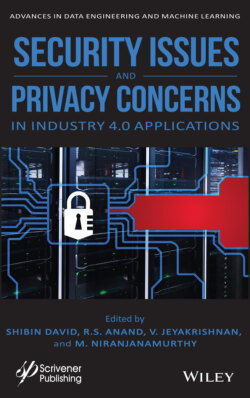Читать книгу Security Issues and Privacy Concerns in Industry 4.0 Applications - Группа авторов - Страница 25
1.3.3 SWMS Using Smart Grids
ОглавлениеIn Singapore, the aim of the Public Utilities Board (PUB) is to supply fresh drinking water to the society throughout the day through the smart water grid system [16]. It is made possible to design smart grid water systems by using the sensors and advanced analytical tools. Smart water grid facilitates the decision support system along with real-time monitoring, which helps to manage the water supply network efficiently. A smart water grid system highlights the five important features of WSN, namely, asset management, water conservation, water quality management, automated water reading and leak management. The system is correlated with the network system and the customer’s end. Minimization of the leakage problem and efficient water quality can only be done with the help of enhanced asset management and leak preventive management. Real-time water consumption information can be extracted from the automated meter reading for helping the customer and to provide information regarding water conservation between them and company principles. The only theme is to embrace data analytics tools for developing a new technology to fulfill the requirements of water efficiency and customers of smart water grid systems.
Although IoT gives growth to our society in the advancement of technologies, the system faces an issue when there is a lack of energy. Therefore IoT gets connected to the smart grids to give better results. For any smart city, IoT and smart grids are undoubtedly the important features. These include practice of smart devices like advance meters, sensors and actuators through which the automation devices are used for controlling, monitoring. Emergencies in the power grid are rapidly increasing in the coming era of the energy sector. However, it can be proven that the combined IoT and smart grid system raises various types of network-based systems at power generation side and transmission level [17].
With such advanced technologies and their development, research based on cyber-attacks attracts more attention, since it involves interoperability and connectivity issues. In the coming era, almost all the private and government services will stretch out their focus on the smart grid as their energy sector consists of residential, commercial and industrial infrastructure developed based on IoT architecture and regulatory standards. However, our next-generation IoT technologies and their complications in the energy management system should be explored by the energy stakeholders. Hence, cost of energy required is minimized; utility peak gets minimized in all the sectors, as the new power plant is constructed, aimed as a support for a strong business platform with large opportunities [18].
